Motorola Droid RAZR Review - A Better Clad Bionic
by Brian Klug on December 16, 2011 2:01 AM EST- Posted in
- Smartphones
- Droid
- LTE
- 4G
- Motorola
- Android
- Mobile
- Droid RAZR
- motorola droid RAZR
Lapdock 100 and Accessories
For some reason, even though I’ve touched nearly all the Motorola Droids at some point or another, I’ve never managed to actually sit down and use one of the laptop docks. Sure, I poked at the Atrix lapdock for a little while back when that came out, but never really got the chance to experiment and try to fit it into my workflow.
This time we’ve got the Lapdock 100 which is compatible with virtually all of the newer laptop-dock enabled phones, including the RAZR, Atrix 2, Bionic, Electrify, and Photon 4G. That list is essentially all of the devices that ship with the webtop application installed with the exception of the Atrix. I didn’t realize it, but the older Atrix laptop dock is incompatible with these newer devices owing to the microHDMI and microUSB ports being position swapped.
In case Motorola’s lapdock concept is one that you haven’t been introduced to yet, the idea is to use the smartphone SoC in conjunction with some virtualization (called the Webtop Application) to drive a Linux desktop environment and a few applications on a larger canvas. The laptop dock doesn’t include much more than peripherals (keyboard and trackpad), a display, and battery - everything else really is running on the attached device. The smartphone display then becomes a window which you can interact with alongside desktop Firefox or a few other bundled applications. Running applications become tabs at the top of the smartphone window pane, and the android navigational buttons are at the bottom.
Firefox on the laptop dock includes Adobe Flash 10.1 as well, and although the version of Firefox running on the laptop dock isn’t bleeding edge at 6.0.2, it’s still a big step forwards from the Android 2.3 browser.
The Lapdock 100 includes a 10.1” 1366x768 display, internal battery for powering the device and the dock, a flexible connector for attaching to compatible phones, two USB ports, trackpad, and a netbook sized QWERTY keyboard with a few positional oddities but overall pretty responsive key domes. The only real issue I have with the keyboard is that the “,./” trio of keys at the right are compressed into a smaller than normal space to accommodate the arrow keys at far right. This is sort of standard netbook fare, although that’s to be expected considering the display’s 10.1” size.
The trackpad is probably the only major frustration I had with the Lapdock 100. I found it difficult to trigger the scroll gesture and instead resorted to using page up and page down for navigation, and it’s also easy to sometimes confuse right and left clicking since the buttons aren’t discrete but rather part of the trackpad area.
The big selling point for the Lapdock 100 (and the upcoming 500 Pro) over either the Bionic or Atrix docks is that they’re compatible with more than just one device, and future devices as well. On the Lapdock 100 instead of really getting a dock, there’s a rubberized flexible connector, and the phone then rests inside a rubberized pocket. I still had the Bionic kicking around and tried it with the Lapdock 100 in conjunction with the RAZR and sure enough things work perfectly. The only odd part about using the dock with the RAZR is that the cable isn’t quite long enough for it to lay horizontally in the rubberized area, instead the only way I could fit it in was vertically.
The Lapdock UI looks like what you’d get if you crossed motoblur with a linux desktop. There are some dock-like shortcuts at bottom, a status bar which mirrors Android’s status bar at the top, and the usual sort of window controls. I find myself wishing that Motorola would expose a developer mode and allow for a native shell inside the webtop application beyond just Firefox.
Unfortunately at this point the only webtop application types are really what ship with the device, what exist inside the Android mobile view, or HTML5 web apps which run inside Firefox, and there’s explicit mention of no shell access.
I mentioned the USB ports previously - these can be used in conjunction with any standard USB HID keyboard, mouse, or headset. In addition if a USB mass storage device is attached, it is automatically mounted and storage is visible to the webtop file manager application and to android as “usbdisk_1.3/” or similar depending on the device (as opposed to sdcard/ and sdcard-ext/ for those volumes).
There’s also the ability to print from the Lapdock using built-in CUPS over the network, which I tested with two Brother and Samsung network printers. The settings panes provide all the basic functionality you need to print, and Firefox likewise lets you shoot jobs over just fine.
The lapdock’s size makes it feel a lot like a netbook in the hands. The only place where it’s a bit clumsy is in the weight and balance department; nearly all the weight and thickness on the lapdock is at the back quarter presumably where the battery is. That makes it a bit weird to balance on your knees or hold with one hand compared to an ordinary notebook or netbook.
The lapdock is a good compliment to any of the compatible smartphones if nothing else because it’ll simultaneously charge the phone and give you a much bigger display to play around on. That said, there’s much more functionality that could be unlocked here were more open development (and not HTML5 webapps) enabled. Of course, the other thing is that the lapdock lets you essentially use a desktop browser without resorting to paying tethering fees or using a third party application. It’s cheaper at $249 (as of this writing) than the Chromebooks (which hover between $350 and $450) which subjectively offer the similar level of occasionally sluggish browsing performance.


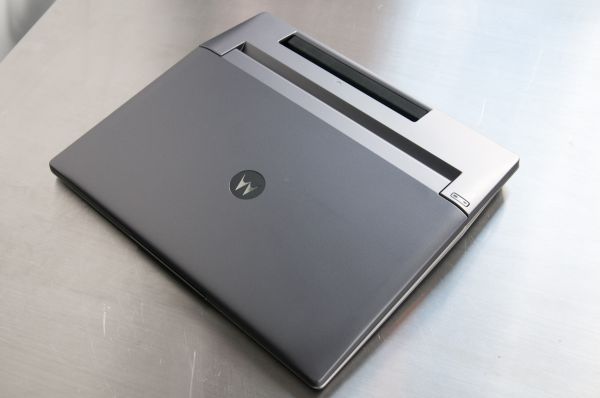


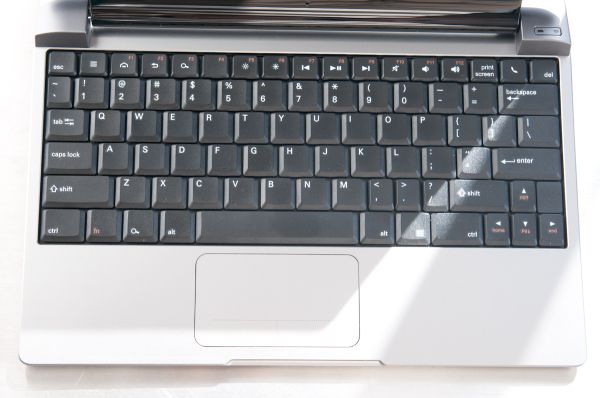
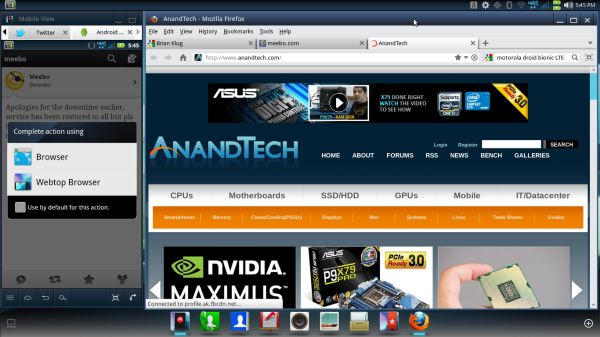
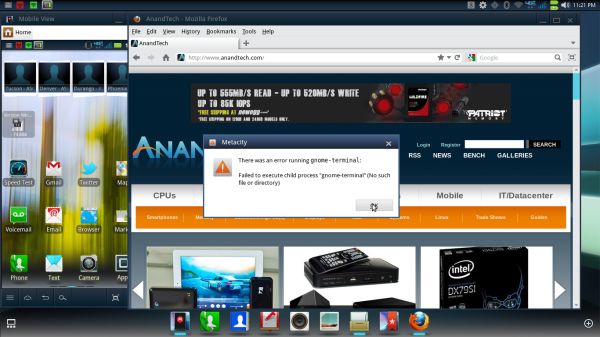
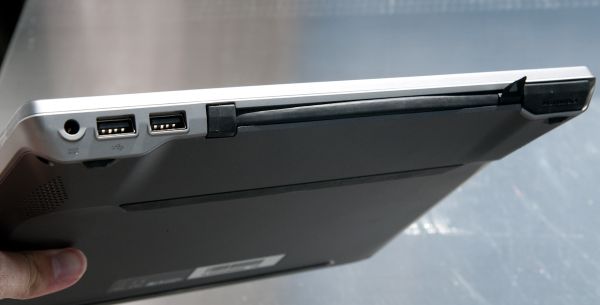















76 Comments
View All Comments
ananduser - Friday, December 16, 2011 - link
Much better than the one on The Verge.GrizzledYoungMan - Friday, December 16, 2011 - link
As usual, the reviews of wireless devices here kick ass. I'm not really interested in this phone - the wide bezel around the screen and the motoblur really bugged me - but it is a treat to read something about it that amounts to more than "how is this not like an iphone?"Looking forward to the Galaxy Nexus review, even though I'll likely already own it by the time your review is published. On principle, I can't bring myself to buy any phone loaded down with skins and bloatware, so there's only really one Android phone choice for me.
Maybe I'm just surly this morning, but Motorola's latest industrial design language really isn't doing it for me. It has this Tron Legacy-esque cheesy vibe to it that is going to age quickly and poorly, I think. By comparison, it seems like Samsung and Nokia are on the right track, focusing on designs that are respectively helpful and pragmatic, and personal and pleasurable to use.
Apple has been disappointing lately on design. The iPhone 4S body still looks great, but their software is getting more decorated and literal with every revision. I like a lot of things about the 4S - especially the camera - but the software was a huge disappointment.
zeagus - Friday, December 16, 2011 - link
Keep in mind the Galaxy Nexus is suffering some controversy vs. the "Pure Google" GSM version by having had VZW remove Google Wallet from it and adding My Verizon Mobile and Backup Assistant..medi01 - Friday, December 16, 2011 - link
Why do mentioned manufacturers: Appl,Motorol,Noki need battery "tradeoffs" due to slimness and lightness, while Samsung doesn't? Hard to follow on this one.JasonInofuentes - Friday, December 16, 2011 - link
Samsung makes an entirely different trade off, plastics. Sammy has perfected thin, hard plastics in their pursuit of slim, lightweight phones. The cost is feel. The RAZR feels as expensive as it is, the Samsung phones feel like shiny, low cost plastic. That said, using light plastics hasn't stopped Samsung from producing attractive designs, and though the plastics can scuff easily they are otherwise quite durable.TedG - Friday, December 16, 2011 - link
I got sick of waiting for the Nexis (or iphone 5) and purchased the Razr about a month ago upgrading from the Droid X. In real life use it is pretty nice. It is quick responding and well built. The camera to me is just OK. I got a widget that turns the 4g off most of the time extending the battery life dramatically. Overall I really like this phone.loribeth - Tuesday, December 27, 2011 - link
I wonder if I turn off my 4G, my hot spot would stay connected?geniekid - Friday, December 16, 2011 - link
Two things.1) I second lemmo's request for an audio quality section like the one for the GS2 review. That particular review revealed some nasty things about interference and a poor codec that completely turned me off to the GS2.
2) I completely agree about the importance of battery life. It's really the only complaint I have about my 1.5 year old Incredible running Cyanogen. Give me the same phone with 2x the battery life and I'd gladly take it over anything else in the market right now.
lemmo - Saturday, December 17, 2011 - link
Thanks geniekid, yep I reckon audio testing will be a real diferentiating factor for Anandtech, as no other sites do it... similar to Anand's battery testing methodology which set the reviews aside from all the rest.Maybe they will do a comparative audio test with other phones when they do the Nexus review...?
ecuador - Friday, December 16, 2011 - link
After so many Android reviews I am still waiting for Anandtech to review the only phone & OS I have tried that seems to me clearly better than iOS. I am talking about the Nokia N9 with MeeGo which blew me away so much when I tried it I bought it immediately despite the somewhat steep price. Am I alone to being unimpressed by most Android phones?